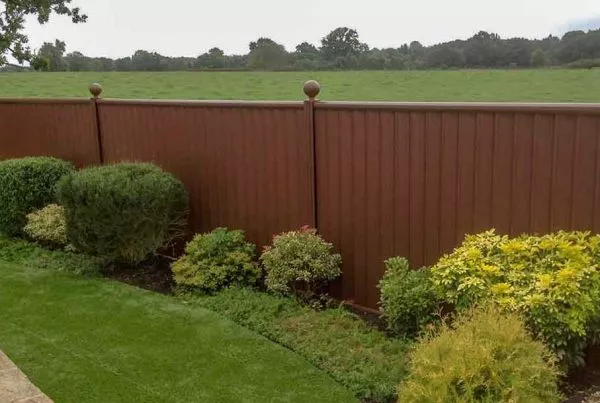Did you know that not all home insurance policies cover storm damage? Fences and sheds are usually excluded from insurance policies, according to the Association of British Insurers. Even if you are covered for storm damage, insurers may disagree on what constitutes a ‘storm’ and decline to pay out.
Is this really a problem? Well, there were 12 major storms during Winter 2013-14, which was the stormiest period of weather the UK has experienced for at least 20 years. Winter 2015-16 was the second wettest and there were nine ‘named’ storms from November onwards.
Assess

Insurance claims will also often be denied if you are deemed to be ‘liable’. This means, for example, if you knew your roof tiles were loose or fence panels were rotten. So the first thing to do is assess your property and garden. Try to spot any obvious issues; is your home in good repair? After all, compromised roof tiles or damaged guttering will be the first casualties. If you have trees or large shrubs in your garden, check them for dead or rotten branches (it might be worth getting an expert to check this for you).
Luckily you can do a number of things to prepare for stormy weather. You can even look at getting an optional add on policy specifically for storm damage. It’s worth keeping an eye on the news for storm reports, and setting up some news alerts online. You can even follow the Met Office on Twitter (@metofficestorms) for storm warnings.
Prepare

First, focus on basic home maintenance. Arrange for a tree surgeon to prune back any shrubs or trees. Secure your car in a garage, store away any electronic items and make sure flower pots and garden ornaments are tidied away (to avoid smashed windows). Ensure your TV aerial is carefully fixed and check for any electrical leads that could come loose (this could cause severe problems). Also, strap any trampoline down as strongly as possible.
Next it’s time to think bigger. Sheds and fences are the two biggest ones. They will likely need securing or even replacing. Can your shed be easily dismantled? This is an extreme step, but some models can be taken apart very easily. This can be the easiest way to protect it during a spate of severe weather. Next, take a look at your fence – and be brutal. Will those three year old store bought overlap panels really survive Storm Desmond style 80 MPH winds?
Replace

If your fence is older, damaged, or starting to show signs of rot or wear, it might just be time to replace it. While this is an investment, it’ll be much better value than paying to fix your neighbour’s windscreen after your fence lands on it. One of the best alternatives to cheap overlap fencing is ColourFence. It’s a strong, durable fencing solution designed to withstand gusts up to 130 MPH.
ColourFence is made of zincalume steel. It’s corrosion resistant and rot proof; it’s also designed to stand up to the most extreme weather conditions. These strong fence panels require very little maintenance and are guaranteed for 25 years. They are also fitted by fully trained and accredited experts, so you don’t have to worry about cowboys or DIY mistakes.
So, is it worth it? Well; the reality is that our weather is getting more extreme. One Oxford University study found that climate change has increased the chances of Desmond-like storms by about 40 per cent.
ColourFence may be a higher initial investment than cheaper wooden panels, but work out as being the best value fence panels long term. The panels are specifically designed to withstand strong winds, and are guaranteed for a quarter of a century, so will be replaced in the unlikely event that they do get damaged.
How are you planning to prepare for another stormy winter?

If you are looking to replace your garden fence with one built to last, please contact ColourFence today!




